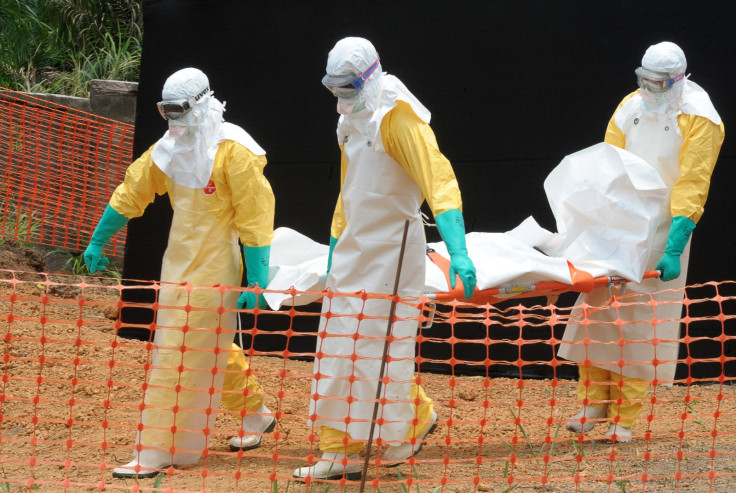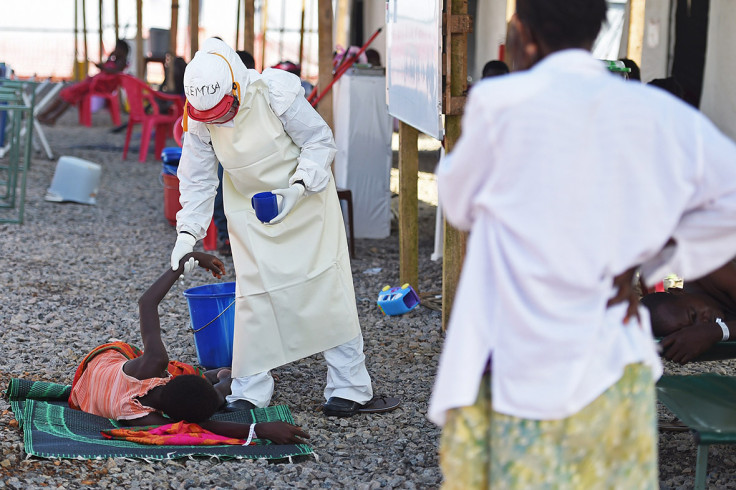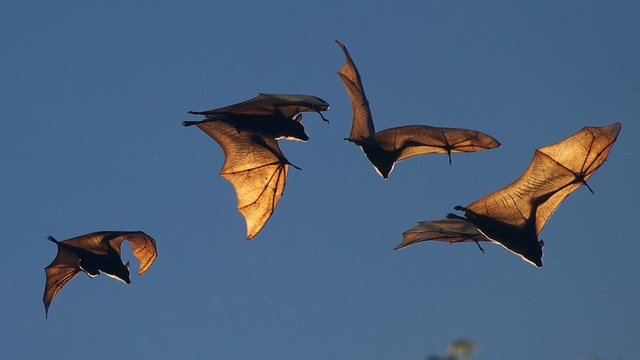Ebola recap: A year after the first case and many lessons later, the virus plods on

From a barely recognised word, Ebola entered popular lexicon in the year 2014.
In one of the deadliest outbreaks, since first discovered in 1976, the virus has claimed the lives of over 7,533 people and infected over 19,000 in the West African nations of Liberia, Sierra Leone and Guinea, in a year's time.
Bodies piled up in hospitals and left untended on the streets, people dropping dead in front of volunteers and villages cordoned off with barbed wires and barricades are among the nightmarish images from a year of Ebola.
While the grip of Ebola has slackened over Liberia and Guinea, transmission is intense in Sierra Leone. According to the World Health Organisation, it continues to affect people in poor African nations.
Meanwhile, after his second visit to the region, CDC director Tom Frieden noted an improvement in controlling the spread of the disease, while he added that much still needs to be done to stop the first Ebola epidemic.
"The outbreak continues to surge in Sierra Leone, and there has been a troubling spread in Guinea's capitol city. We've got a long way to go and this is no time to relax our grip on the response," he said on Monday, 22 December.
The WHO declared the outbreaks in Nigeria and Senegal officially over, as there have been no new cases reported since 5 September.
The current outbreak has been traced to a two-year-old toddler, who died in December 2013 in Meliandou, a small village in south-eastern Guinea.
Symptoms and care
Ebola can take between two to 21 days before victims show symptoms, at which point it becomes contagious.
The symptoms begin with fever, muscle pain, sore throat, headache and progresses to diarrhoea, vomiting and bleeding sometimes from the eyes and mouth. It spreads from contact with body fluids like blood, saliva, sweat and semen.
One of the main threats of contracting the disease is dehydration, which can be addressed by drinking clean water and using basic drugs.
Except for one critically ill patient, most of the others infected by the virus and treated in the US recovered, which proved how important it was to isolate the patients and provide them with critical care.

Why then have so many Ebola infected patients died?
Considering the spread of the disease, one aspect stands out, which is the slow pace of international aid and response. Until the virus landed in countries out of the African continent, medical assistance was not stepped up.
What could have been contained early on, went out of control due to a lack of infrastructure and medical care.
Logistics played as important a role as viral transmission
There were not enough ambulances, hospital beds nor an efficient way to identify infected people and provide them with medical care, before the infection could spread to others.
With just about 2,400 health workers for a country of 6 million people, Sierra Leone has lost over 100 people to Ebola.
According to WHO, Liberia and Sierra Leone had about one doctor per 100,000 people while Guinea had 10 doctors for every 100,000 before the outbreak. The United States has 245 doctors for 100,000 patients.
Also, remote regions were operating health care units without separate sanitary facilities for isolation wards. This is where international aid could have helped in containing the spread of Ebola.
The UK has so far pledged $200m (£125m, €157.8m) for the cause. Of the near $1bn that has been received for battling Ebola, World Bank leads with donations worth 27.8%, followed by the US with 23.8% and the African Development Bank with 12%.

Lack of public awareness on the spread of the virus escalated the extent of the infection.
Studies noted how the virus widely spread at funerals, as deceased victims carried a high viral load in their blood and excretions. But people continued to clandestinely bury the dead, often without precautions.
Superstitions also led people to suspect the government and chase volunteer groups visiting their hamlets. They preferred seeking help from local witchcraft practitioners, until the infections had worsened.
When compared to HIV, which has killed 36 million people since the 1980s and even today sees 35 million infected, Ebola has not caused so many deaths, but could it become the world's next Aids?
Both spread through bodily fluids but HIV has a long latency period during which people can transmit the disease while with Ebola the symptoms progress fast and weaken patients leaving them practically bed-ridden.
Unlike HIV, Ebola is a swift killer, and this means the outbreak will eventually burn itself out, say experts calling for public health measures to control the virus.
But the lessons are the same -- that the health of humans are interconnected the world over.
Interconnected world
As Dr Bruce Hirsch, an infectious-disease specialist at North Shore University Hospital said, "If anyone is deprived of appropriate health care ... everybody on the planet is going to pay the price for that."
Not just humans, all species are interconnected, show studies on zoonotic diseases.
A 2008 analysis by Peter Daszak, president of the EcoHealth Alliance looked at 335 emerging diseases from 1940 to 2004. It concluded that disease emergence events have roughly quadrupled over the past 50 years. Some 60% of the diseases spread from animals and the majority of those came from wild creatures, reported Newsweek.
These events tend to be more in impoverished areas such as the tropics, rich in wildlife species and under increasing human pressure.
Human pressure on wildlife
In 2010, another study showed that species losses in ecosystems result in a rise in pathogens as humans intrude into areas of high biodiversity. Current extinction rates are estimated at 100 to 1,000 times higher than in the past and projected to increase at least a thousand times more in the next 50 years.
Examples are plenty -- HIV/AIDS pandemic started from human contact with chimps and mangabey monkeys; SARS (Severe acute respiratory syndrome) originated in Chinese bats; CJD (Creutzfeldt-Jakob disease) in cattle; and MERS (Middle East Respiratory Syndrome) in camels.
Adding to that concern is also a more man-made problem in the bio-terror prospects arising from virus containment labs. Accidents involving the discovery of old vials of smallpox in a Food and Drug Administration laboratory in Maryland, US only go to show that even highly secure facilities could place the public at risk.
Ebola is another deadly virus with terror potential.
Viruses have to live somewhere. When the Ebola virus disappears between outbreaks, it has to be living in some reservoir host, but this host has not been found.

Host reservoir?
Antibodies to Ebola have been found, but no one has ever isolated the live Ebola virus from a fruit bat or any other creature.
Researchers do not know whether bat-to-bat transmission, bat-to-human transmission or bat-to-other animal-to-human transmission is responsible for the beginning of the current outbreak. It is far from established that bats are the hosts.
The present outbreak rules out any animal to human transmission besides the single first case.
The recent outbreak also shows the virus in West Africa has diverged from its lineage in Central Africa just within the past decade to reach south-eastern Guinea. The Central African Ebola virus could be expanding its range, by infecting new populations of reservoir hosts.
The fear is if the virus becomes endemic to a region, it will be difficult to completely eradicate it.
The progression
First described by Doctors without Borders in June as spinning out of control, Ebola spread from Liberia to Nigeria where it claimed nine lives before being controlled.
In August, the WHO declared an international public health emergency calling for international support to combat Ebola.
By September, the US National Institute of Health claimed Ebola was "completely out of control". And in October the US Centers for Disease Control and Prevention (CDC) warned Ebola could infect more than 1.5 million people by the end of January, based on statistical projections of the Virginia Bioinformatics Institute (VBI).
Later in the month, Mali confirmed its first death and soon enough followed up with a couple more.
Mali is currently battling a second wave of the deadly virus.
The outbreak's fallout
Ebola has left behind over 4000 children orphaned, battered the economy dependent on agriculture, with farms abandoned and people on dole.
It will take billions of pounds in aid to help the three nations emerge after the outbreak has been controlled. But for now, efforts are on to find a cure for the disease. Vaccines have shown mixed response while drugs seem to be more promising.
Both WHO and CDC caution that this is not yet time to relax the vigil or stop sending in aid. A single case that goes unreported and not isolated has the potential to set off chain reactions.
The world cannot afford another Aids.

© Copyright IBTimes 2025. All rights reserved.





















